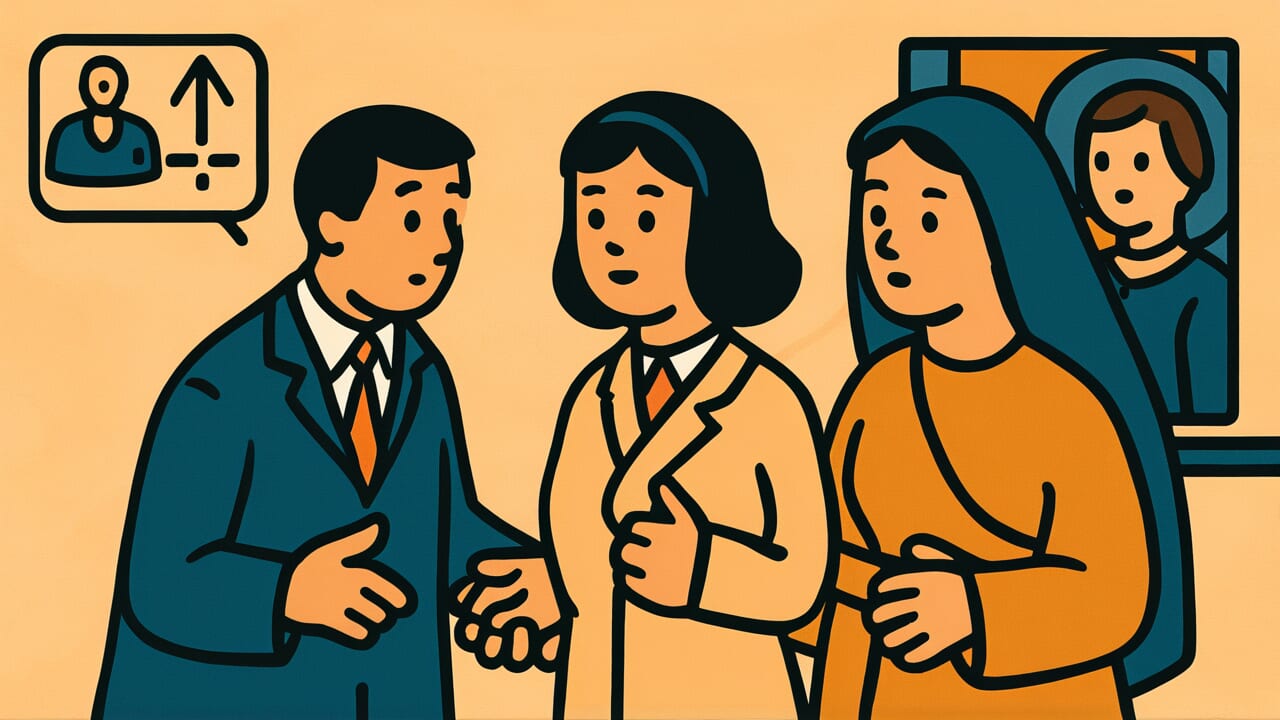How to Read “Fate and life cannot be tied together”
En to inochi wa tsunagarenu
Meaning of “Fate and life cannot be tied together”
“Fate and life cannot be tied together” means that human connections and human life cannot be freely controlled by willpower or effort alone.
No matter how much we wish for it, important matters like meeting or parting with someone, and life and death itself, cannot be artificially tied together or manipulated. This proverb teaches us about the mysterious nature of destiny.
People use this saying when facing situations that don’t go as planned in important moments of life. It’s also used when experiencing unexpected meetings or farewells.
The expression shows an attitude of recognizing the limits of effort and accepting fate.
Even today, the meaning of these words is deeply understood in situations involving meeting a marriage partner, parting with loved ones, or matters of life and death.
It expresses a humble attitude that even after doing everything humanly possible, we must ultimately leave things to heaven.
Origin and Etymology
No clear written records remain about the origin of this proverb. However, we can make interesting observations from how the words are structured.
Let’s focus on the pairing of two words: “en” (fate/connection) and “inochi” (life). Since ancient times, Japanese people have called meetings between people “en” and viewed them as destined.
Meanwhile, “inochi” refers to fundamental matters beyond human control, like life, death, and lifespan.
The expression “tsunagarenu” means cannot be tied together with thread or rope. During the Edo period, people made efforts to create connections artificially.
They visited shrines for matchmaking and arranged marriage proposals. Yet they also held a resigned acceptance that no matter how much effort they made, something beyond human wisdom ultimately decided the outcome.
This proverb is thought to express the Japanese view of destiny in a concise way. It contains humility and philosophical acceptance that human capabilities have limits.
Both fate and life must be left to heaven. The saying likely reflects influences from Buddhist concepts of “cause and connection” and Shinto ideas of “divine will.”
Usage Examples
- Those two getting together was a case of “fate and life cannot be tied together”—human power couldn’t have changed it
- No matter how much medicine advances, as “fate and life cannot be tied together” suggests, we must ultimately leave things to destiny
Universal Wisdom
Behind the passing down of “Fate and life cannot be tied together” lies a fundamental human question. That question is: “How much can we control our own lives?”
Humans are beings who make plans, work hard, and try to shape their futures. Yet at the same time, we’ve continuously faced realities that don’t go as planned no matter how hard we try.
Meeting someone you could call your destined partner isn’t something you can plan and make happen. Parting with precious people isn’t something you can avoid by wishing it away.
What this proverb shows is the importance of recognizing the limits of human power. But this doesn’t mean resignation or helplessness at all.
Rather, by acknowledging that some areas lie beyond our control, people can finally find peace of mind.
The attitude of trying to control everything by your own power actually creates suffering. Give your full effort to what should be worked on, but leave the results to heaven.
This wisdom is the truth about life that our ancestors saw through. This proverb contains human humility and reverence for destiny.
When AI Hears This
There’s a discovery that goes against human intuition. In 1973, sociologist Granovetter surveyed people who successfully changed jobs.
He found that important job information came not from close friends or family, but overwhelmingly from acquaintances they rarely saw. Specifically, 83.4% of information sources were “people they occasionally met” or “people they hardly ever met.”
Why does this happen? Close people exist in similar environments to us and share the same information. In other words, information overlap is high.
On the other hand, weak connections belong to completely different worlds and possess information we don’t know. In network theory, these weak ties become valuable pathways that bridge different groups.
Here lies the essence of “Fate and life cannot be tied together.” Life-changing encounters cannot be planned. That’s because they involve information and opportunities outside your predictive range.
If you could know their value beforehand, they’d already be within your world. Truly important connections arise from chance encounters that seem insignificant at first glance.
That’s why you’re more likely to meet your destined partner at a friend-of-a-friend’s drinking party than at a matchmaking event.
In the complex system called life, unpredictable weak ties function more powerfully than intentionally designed networks.
Lessons for Today
What this proverb teaches modern people is the importance of “the courage to let go” in life. Modern society demands that we plan, manage, and control everything.
We make career plans, strategically build networks, and thoroughly manage our health. But this proverb quietly teaches that some areas cannot be reached by such efforts alone.
Meeting important people doesn’t necessarily happen even if you set conditions on a matching app. Even when taking care of your health, unexpected illness can strike.
That’s why after making every possible effort, we need the flexibility to accept results.
This isn’t resignation—it’s actually a way to gain freedom of mind. When released from the pressure of trying to control everything yourself, you can live more fully in the present moment.
If there’s a connection, you’ll meet. If there’s no connection, you’ll part. By accepting this natural flow, your heart should become much lighter.
Don’t treat destiny as an enemy, but accept it as an ally. That’s the wisdom of living that this proverb shows.



Comments